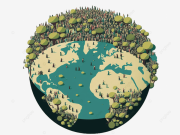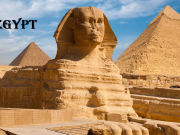Welcome to our electronic blog, where we embark on a fascinating journey through the evolution of archaeology. Join us as we explore the development of this field of study, from its humble beginnings to its modern-day advancements. Discover how archaeologists have unearthed ancient civilizations, deciphered forgotten languages, and pieced together the puzzle of human history.
Early Beginnings:
1.1 Antiquarianism:
The origins of antiquarianism and its focus on collecting artifacts.
Early explorations and discoveries by antiquarians.
The emergence of curiosity about the ancient world.
1.2 The Birth of Archaeology:
The shift from antiquarianism to a scientific approach.
The pioneering work of individuals like Heinrich Schliemann and Sir Flinders Petrie.
The development of systematic excavation techniques.
Archaeological Methods and Techniques:
2.1 Stratigraphy and Excavation:
The importance of stratigraphy in understanding the chronological sequence of archaeological sites.
Excavation methods, including stratigraphic excavation and remote sensing technologies.
2.2 Dating Techniques:
Radiocarbon dating and its significance in determining the age of organic materials.
Other dating methods, such as dendrochronology and thermoluminescence.
2.3 Artifact Analysis:
The study of pottery, tools, and other artifacts to gain insights into ancient societies.
Techniques used in artifact conservation and preservation.
Major Archaeological Discoveries:
3.1 Ancient Egypt:
The exploration of ancient Egyptian tombs and temples.
The discovery of Tutankhamun’s tomb by Howard Carter.
The decipherment of hieroglyphs by Jean-François Champollion.
3.2 Mesopotamia:
Excavations at ancient Mesopotamian cities like Ur and Babylon.
The decipherment of cuneiform writing by Henry Rawlinson.
3.3 Indus Valley Civilization:
Archaeological investigations at Harappa and Mohenjo-daro.
Uncovering the urban planning and advanced drainage systems of the Indus Valley Civilization.
3.4 Classical Archaeology:
Excavations at ancient Greek and Roman sites, such as Pompeii and Athens.
The exploration of classical cities and their architectural marvels.
Subdisciplines and Specializations:
4.1 Underwater Archaeology:
The exploration of submerged ancient sites and shipwrecks.
Techniques used in underwater excavation and preservation.
4.2 Bioarchaeology:
The study of human remains to understand ancient populations.
DNA analysis and isotopic studies in bioarchaeology.
4.3 Experimental Archaeology:
Recreating ancient technologies and practices to gain insights into past cultures.
Experimental reconstructions of ancient structures and tools.
Modern Advances and Future Directions:
5.1 Remote Sensing and Geospatial Technologies:
The use of satellite imagery and LiDAR in archaeological surveys.
Geographic Information Systems (GIS) applications in archaeology.
5.2 Digital Archaeology:
3D modeling and virtual reconstructions of ancient sites.
The digitization and preservation of archaeological data.
5.3 Indigenous Archaeology and Community Engagement:
The importance of involving local communities and respecting indigenous perspectives.
Collaborative approaches in archaeology and heritage management.
Cultural Heritage Management:
6.1 The establishment of laws and regulations for the protection of archaeological sites.
6.2 The role of museums and cultural institutions in preserving and exhibiting archaeological finds.
6.3 Cultural heritage management practices and challenges in different regions of the world.
Archaeology and Anthropology:
7.1 The relationship between archaeology and anthropology as interdisciplinary fields.
7.2 Ethnoarchaeology and its contribution to understanding past societies through the study of contemporary cultures.
7.3 Human evolution and the use of archaeological evidence to trace our ancestral origins.
Archaeology and Technology:
8.1 Advances in archaeological survey techniques, including aerial photography and satellite imagery.
8.2 LiDAR technology and its impact on identifying hidden archaeological features.
8.3 3D scanning and printing in archaeological research and artifact replication.
Archaeology and Cultural Interpretation:
9.1 The role of interpretation and storytelling in presenting archaeological discoveries to the public.
9.2 Cultural context and the interpretation of artifacts and sites.
9.3 Representation and inclusivity in archaeological narratives.
Archaeology and Indigenous Perspectives:
10.1 Indigenous knowledge and the integration of traditional knowledge systems in archaeological research.
10.2 Collaborative archaeology with Indigenous communities and the importance of community engagement.
10.3 Decolonizing archaeology and addressing the legacy of colonial practices in the field.
Archaeology and Environmental Studies:
11.1 The impact of climate change on archaeological sites and preservation.
11.2 Environmental archaeology and the study of past human-environment interactions.
11.3 Archaeobotany and the analysis of ancient plant remains.
Archaeology and Public Outreach:
12.1 The role of archaeology in education and public engagement.
12.2 Archaeological tourism and its impact on heritage sites.
12.3 Digital platforms and social media in promoting archaeological research and awareness.
Conclusion:
As we conclude our exploration of the evolution of archaeology, we recognize the invaluable contributions made by archaeologists in unraveling the mysteries of the past. From the early days of antiquarianism to the modern technological advancements, archaeology continues to shed light on our shared human heritage. Join us in future blog posts as we delve deeper into specific archaeological sites, civilizations, and the ongoing discoveries shaping our understanding of the ancient world.























